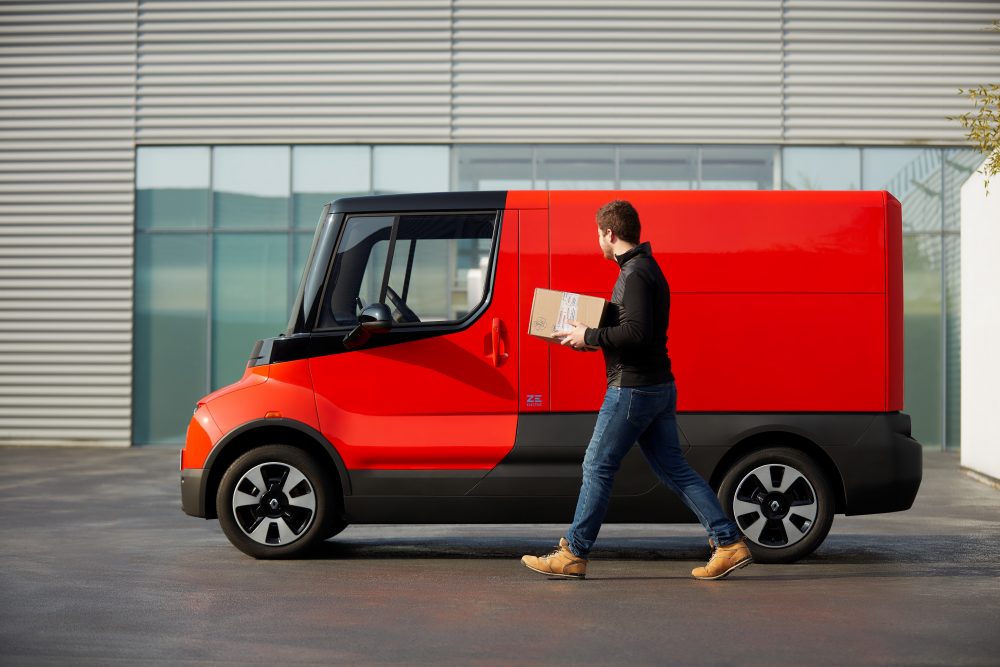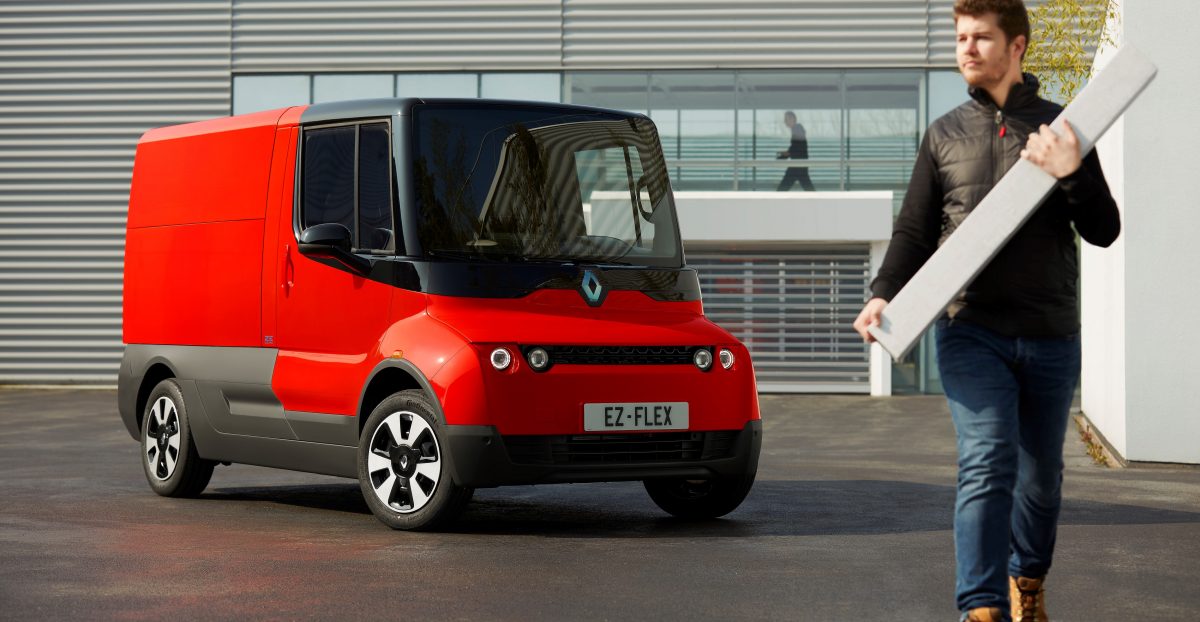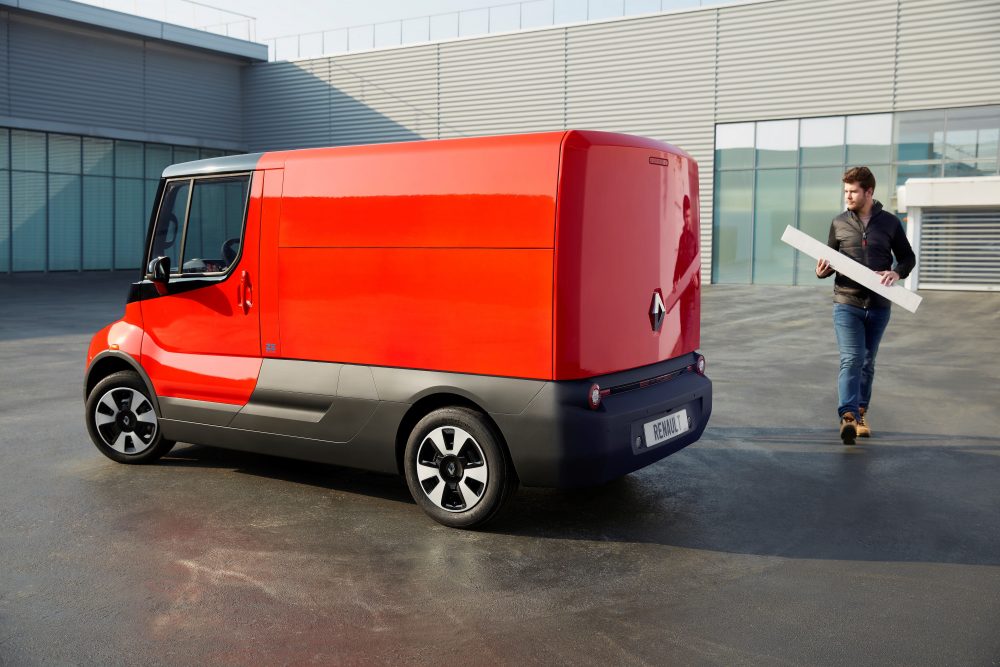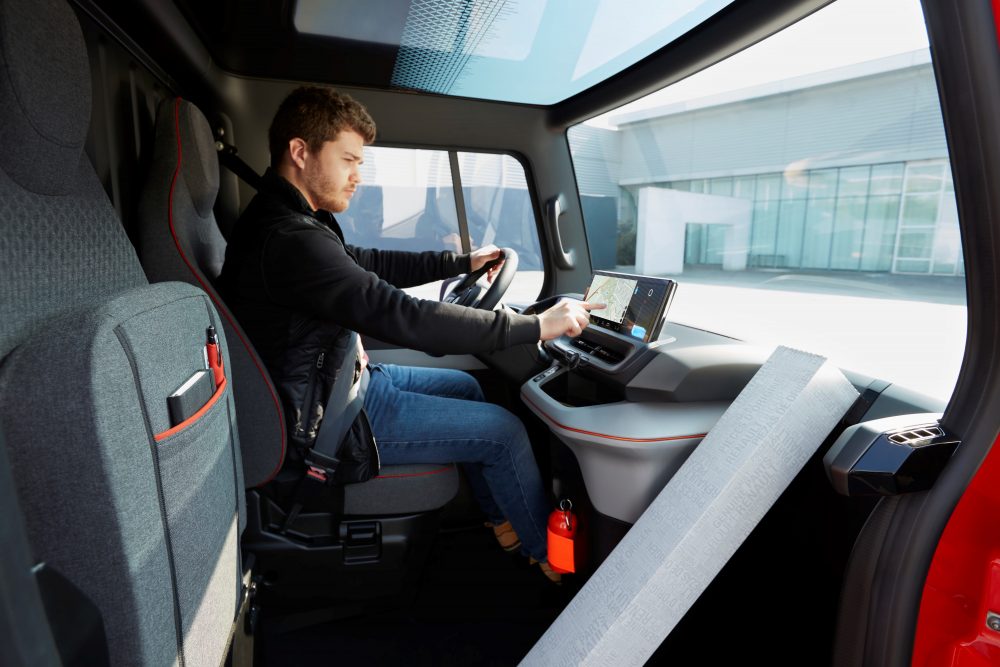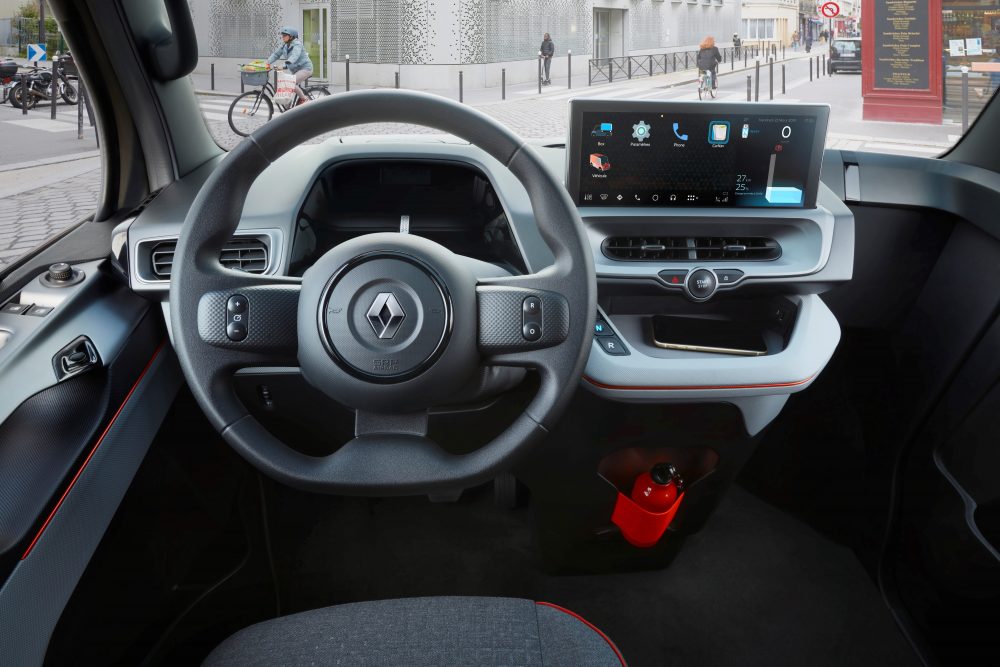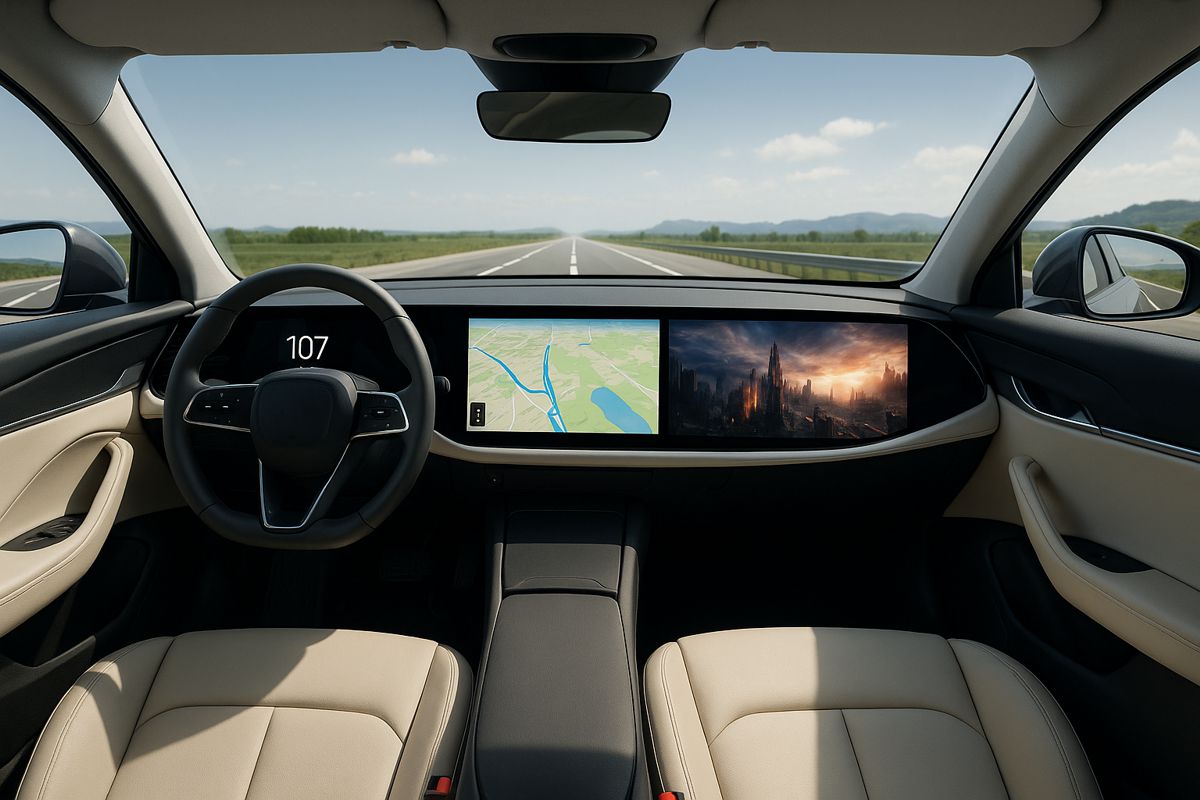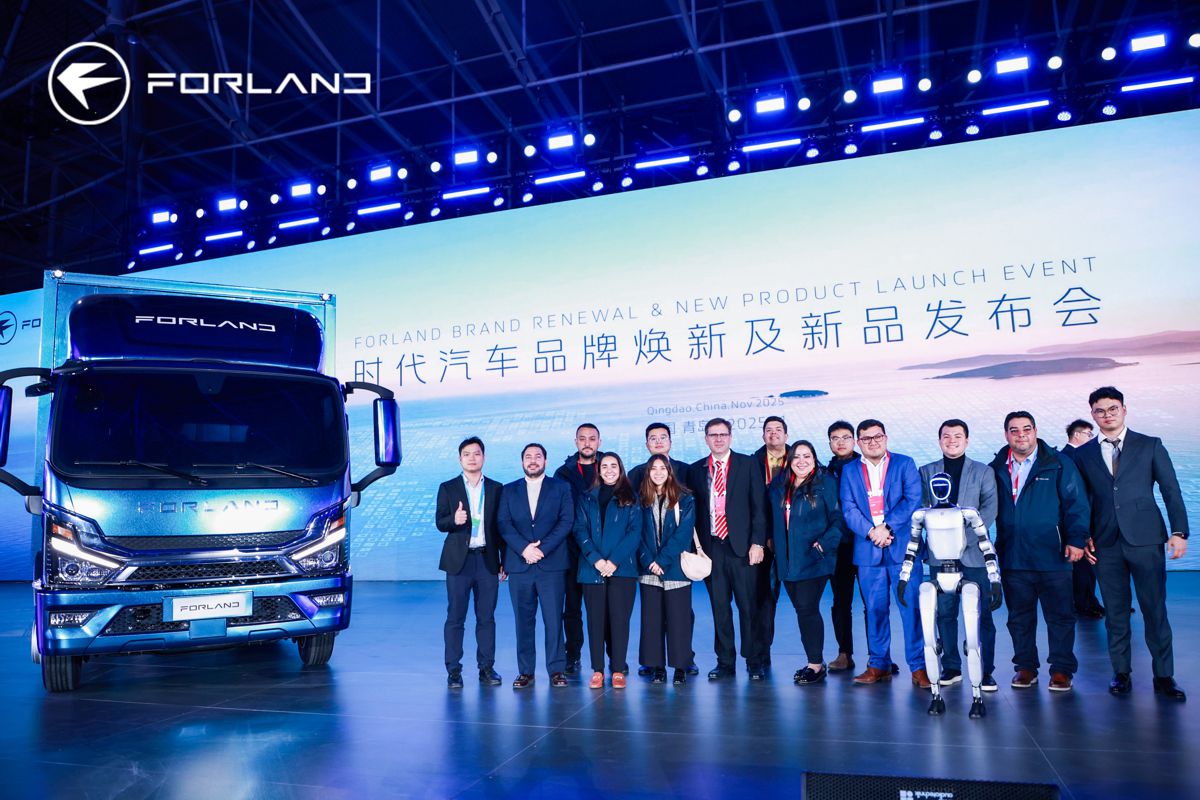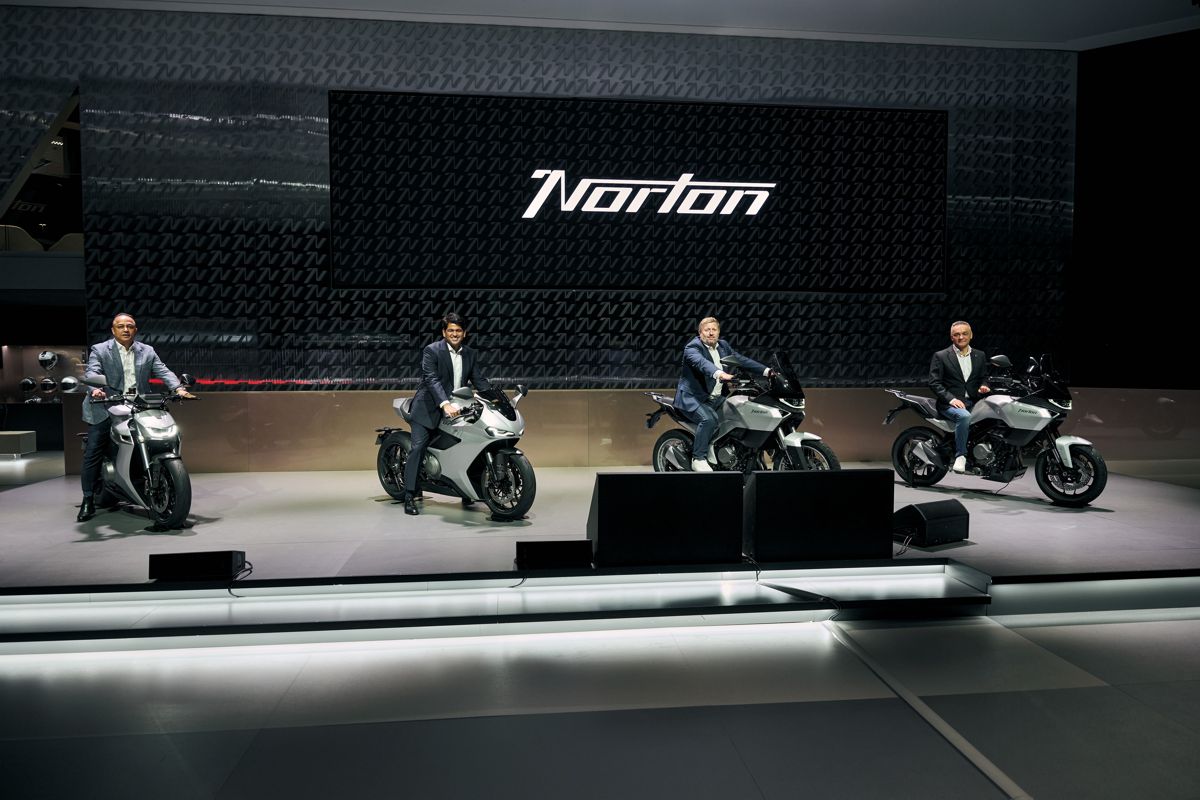Renault experiments with innovative EZ-FLEX delivery vehicle
Renault EZ-FLEX is a compact and manoeuvrable vehicle designed to move seamlessly throughout cities.
It provides an optimal footprint in relation to its load space: the length (3.86 m), width (1.65 m) and height (1.88) are small enough to enable access to car parks. Its 3m³ load capacity is exceptional for its dimensions and made possible by a compact cockpit which still offers the full range of assets of a true LCV. The 4.5 m turning circle provides excellent manoeuvrability in city centres.
Everything was designed to meet the needs of deliverers: the wide access to the driver’s seat which facilitates ingress and egress, a highly visible central dashboard for quick and easy access to driving information, pedestrian and urban environment visibility and simple and efficient driving controls. The human machine interface is modern and fully integrated into the world of smartphones. It offers services and applications linked to the vehicle and can integrate applications linked to various professionals’ activities.
Rear loading is optimized via an ergonomic loading height (760 mm above ground) and openings enabling easy access to the entire loading surface. The vehicle was also designed to enable a wide variety of configurations. These rear space configurations are adaptable, designed to meet the different needs of the professionals by whom the vehicle will be used.
As an electric vehicle, EZ-FLEX can access city centres, offering a range of 150 km adapted to the needs of urban delivery (urban deliveries require driving 50 km per day on average).
EZ-FLEX: A collaborative and unprecedented experiment
A dozen Renault EZ-FLEX vehicles will be lent to various professionals, companies, cities and municipalities in Europe. The experiment is expected to last about 2 years.
The vehicle is equipped with sensors to better understand the uses, and the professionals will enrich this data with their feedback during the experiment. Different data types will be collected: geolocation, mileage, range, use of openings, speed, stops, etc. This data will then be transferred via the vehicle’s connected system, either in real time or once per day, to understand the reality of daily uses.
The analysis of the data, complemented by the professionals’ feedback, will enable Renault to design vehicles which are better adapted to the evolutions in urban logistics. The goal is to have the ecosystem’s players test a vehicle and its services in real-life conditions to obtain a shared vision of urban mobility of goods.
Through this experiment, Renault is initiating a new approach to prepare and design the innovations of tomorrow. This flexible approach, which is a breakthrough in the automotive industry, is very close to practices used in other sectors, such as gaming.
EZ-FLEX: Preparing the mobility of tomorrow
In a world where the soaring urbanization trend will lead to over 60% of the population living in cities by 2030, the movement of people is not the only aspect to rethink. A new era is also beginning for transporting goods: rapidity, flexibility and reliability are the watchwords of the new requirements for consumers at a time that is also seeing a rapid rise in online purchasing. This demand for ever faster and more accurate delivery times is coupled with increasingly drastic regulatory constraints in towns and city centres.
“Sustainable mobility for all, now and in the future” is Groupe Renault’s credo.
Following the Renault EZ-PRO concept car, the Renault EZ-FLEX enables us to continue our exploratory work on the mobility of tomorrow.
Groupe Renault, which has been making cars since 1898, is now an international corporation with a presence in 134 countries and sales of 3.9 million vehicles in 2018. Today, the company has over 180,000 employees, 36 manufacturing sites and 12,700 sales outlets worldwide.
To meet the major technological challenges of the future while continuing to pursue its profitable growth strategy, the group is focusing on international expansion. To this end, it is drawing on the synergies of its five brands (Renault, Dacia, Renault Samsung Motors, Alpine and LADA), electric vehicles, and its unique alliance with Nissan and Mitsubishi Motors.
With its committed 100% Renault team participating in the Formula 1 world championship since 2016, the brand is involved in automotive sports, a true vector of innovation and notoriety.









